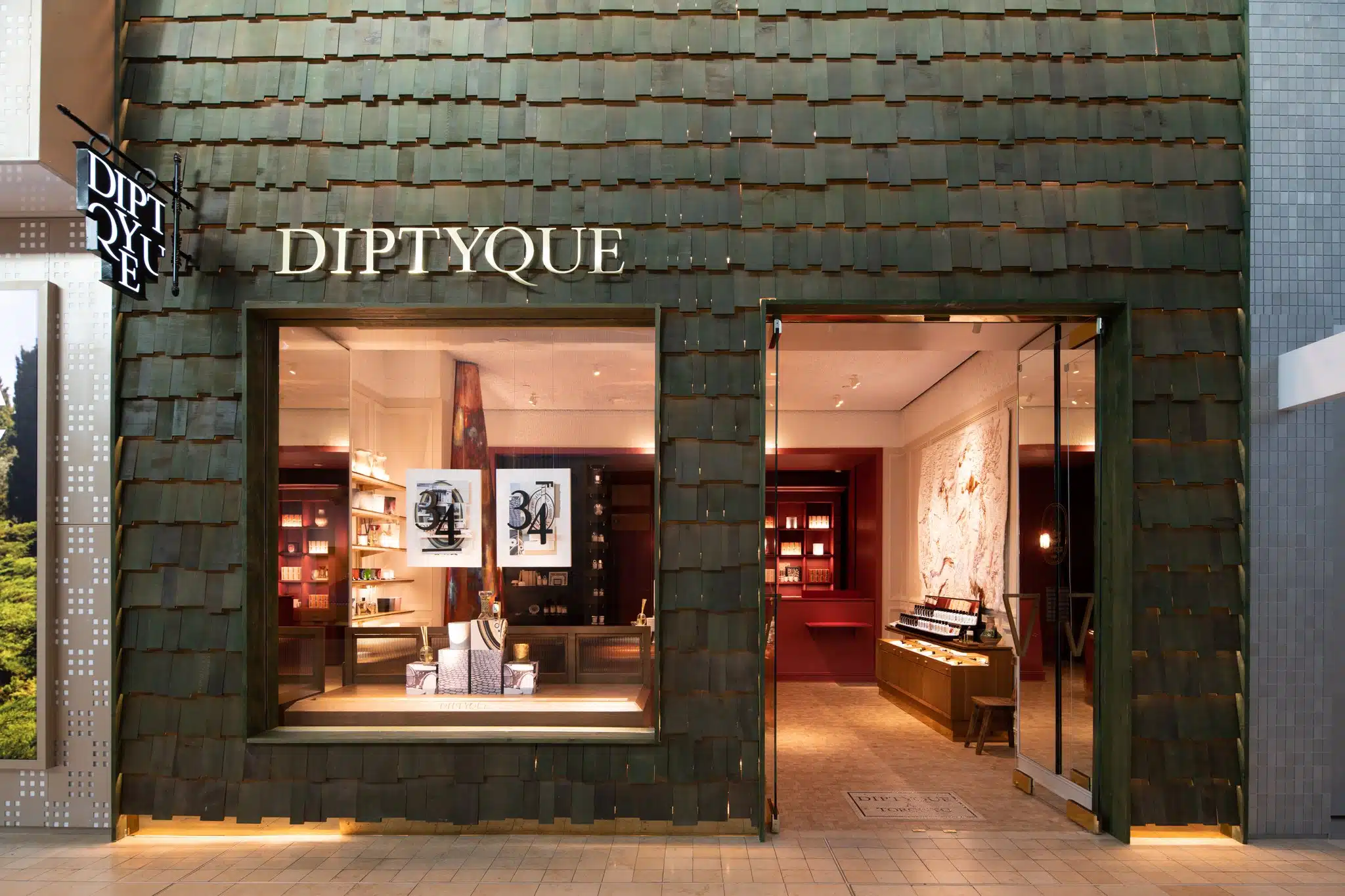In the hustle and bustle of the modern marketplace, where businesses are vying for consumer attention through the digital landscape, one intangible but invaluable asset remains at the heart of every businesses success: brand credibility. For companies, brands, and marketers alike, understanding and leveraging credibility is more than a marketing maneuver, it’s a keystone that supports trust, loyalty, and a positive brand image.
This definitive guide on brand credibility will demystify the term, explain its critical significance, elaborate on strategies for its establishment from industry experts, and detail key metrics for measuring your brand’s trust.
Whether you’re a seasoned marketing professional or an emerging brand manager, the insights here will equip you with actionable approaches to bolster your brand’s credibility and, in turn, amplify your market presence.

Unpacking Brand Credibility
Brand Credibility Defined
At its core, brand credibility denotes the trustworthiness and reliability of a brand in the eyes of its target audience. It’s not just about offering quality products or services; it’s about consistently delivering on promises, values, and expectations. As such, brand credibility is cultivated over time through a combination of factors, including reputation, expertise, consistency, and transparency.
Why is Establishing Brand Credibility Important for Businesses?
In today’s competitive market, consumers are inundated with countless options for products and services. Standing out from the crowd requires more than just flashy marketing tactics or catchy slogans; it demands a strong foundation of trust in your brand. Establishing credibility is vital for businesses because it:
- Builds customer loyalty: When customers trust your brand, they’re more likely to become loyal repeat customers, leading to increased sales and revenue.
- Attracts new customers: A credible brand is more likely to attract new customers through positive word-of-mouth recommendations and online reviews.
- Differentiates your brand from competitors: In a sea of similar products or services, strong brand credibility can set you apart from the competition and give you a competitive edge to help increase revenue.
In a nutshell, the main purpose of establishing brand credibility is to increase sales and revenue. It always relates back to the bottom line and brand credibility is merely a strategy.
How Human Psychology Can Influence Brand Credibility
Human psychology plays a profound role in shaping perceptions of brand credibility. Psychological principles underscore the importance of emotions, beliefs, and experiences in determining the trust and reliability consumers place in a brand. This section explores key psychological factors that influence brand credibility and how businesses can strategically align their branding efforts to foster trust and loyalty among their target audience.
- Cognitive Bias: Cognitive biases, such as the confirmation bias, can significantly affect customer perceptions. Brands that consistently align with their customers’ beliefs and values are more likely to be seen as credible, as people tend to favour information that confirms their preexisting beliefs.
- Social Proof: According to Robert Cialdini’s Principles of Persuasion, social proof is a powerful factor in persuasive communication. Consumers often look to others’ actions and opinions to make decisions. Showcasing customer testimonials, user reviews, and social media endorsements can elevate brand credibility by leveraging the influence of social proof.
- The Halo Effect: This psychological phenomenon, where an initial positive impression leads to biased favourable perceptions in other areas, can be vital for brand credibility. A brand viewed positively in one aspect, such as customer service, may be presumed to have superior quality products or ethical business practices. This underscores the importance of excellence in every customer interaction.
- Brand Consistency: Psychological studies, like those conducted by Keller & Lehmann, have demonstrated the importance of brand consistency in fostering trust and loyalty. Consistency across branding elements (logos, colours, messaging) and interactions creates a sense of familiarity and reliability, which are foundational to brand credibility.
Understanding and leveraging these psychological principles can significantly influence a brand’s perceived credibility. By recognizing the ways human psychology interplays with brand perceptions, marketers and brand managers can deploy strategic initiatives aimed at building trust, deepening customer loyalty, and enhancing overall brand credibility. Engaging in practices that align with these psychological insights can set the groundwork for a brand’s long-term success in a competitive marketplace.



Real-Life Expert Examples
In this next section, we reached out to some founders, CEOs, and marketing professionals to provide examples of how their businesses establish brand credibility, as well as their criteria on ways to measure if they have successfully established brand credibility.
We noticed some themes in their responses and categorized them into four main areas; establishing expertise, transparency, professional visual communication, and humanization of their brand. The majority of our expert responses include metrics to determine brand credibility, and at the end of this section we’ll discuss the importance of metrics in general.
Let’s dive in below:
Establishing Expertise
In the quest to build unshakable brand credibility, establishing expertise stands out as a fundamental strategy. This is because expertise signals to your audience that your brand is a leading authority in your field, equipped with the knowledge and skills necessary to meet their needs and expectations efficiently. It’s not merely about what your brand claims to know or do, but how it demonstrates this expertise through quality products, insightful content, and thought leadership.
When consumers perceive a brand as an expert, they are more likely to trust its recommendations, rely on its solutions, and, crucially, choose it over competitors. Expertise forms the foundation of consumer trust, fostering a relationship that goes beyond transactional interactions to become one of respect and loyalty.
Our experts discuss the benefits of becoming a trusted authority, highlighting the expertise of the business from it’s foundation, as well as the importance of continuous training.
Serve as a Knowledge Hub
Imagine having a friend whom you can rely on; they keep their promises and are always there. Brand credibility is the same. It involves making your brand trustworthy and reliable so that people choose you over others. Credibility increases sales because people buy from brands they trust, sets you apart from competitors, and keeps your customers loyal.
We establish our brand credibility by serving as a knowledge hub for our customers. Our blog has sections that discuss the latest industry news, athlete news and interviews, training guides, and fitness gear reviews. Demonstrating our expertise positions Torokhity Weightlifting as a trusted resource and credible brand that athletes can rely on.
We monitor our online reviews, customer testimonials, and feedback from surveys to measure the success of our efforts. We knew we were doing it right when Reddit discussions started popping up with users referring to our training guides as “Torokhity-recommended” and “Torokhity-suggested.”
Oleksiy Torokhtiy, Founder, Torokhtiy Weightlifting
Leverage Founder’s Unique Expertise
At ClockOn, we’ve established brand credibility by leveraging the unique expertise of our founder, who is a seasoned radiologist. This background has provided unparalleled insights into the specific payroll challenges faced by medical businesses, such as pharmacies and medical centers. By tailoring our payroll software to address these distinct needs, we’ve created an ideal product-market fit that resonates authentically with our target audience.
Our criteria for measuring brand credibility include customer feedback, repeat business rates, and referrals within the medical community. The high level of trust and satisfaction expressed by our customers, combined with our growing presence in the medical sector, are clear indicators of our success in establishing brand credibility. This credibility is further reinforced by the positive testimonials and case studies shared by our users, often citing how ClockOn’s features uniquely cater to the intricacies of medical business operations.
By consistently delivering a product that aligns perfectly with the specialized needs of our market, we affirm our commitment to understanding and serving our clients effectively, and our customers know us as such.
Blake Smith, Marketing Manager, ClockOn
Continuous Training & Furthering Education
At AdamFayed.com, we’re always striving to enhance our brand credibility. One way we do this is by consistently offering high-quality services, ensuring client satisfaction at every touchpoint. For instance, we undertake regular training and education programs to enhance our financial advisors’ knowledge.
This deep-rooted expertise, in turn, provides our clients with the best possible advice, thereby strengthening their trust in us. To measure the success of our brand credibility, we analyze multiple factors, including an increase in client retention rate, positive client testimonials, and a growing number of referrals. These parameters give us a comprehensive understanding of our brand’s credibility in the market.
Adam Fayed, CEO, AdamFayed.com



Brand Transparency
In today’s digitally connected world, transparency has become a pivotal factor in building and maintaining brand credibility. Brands that prioritize transparency communicate openly with their customers about business practices, values, and the origins of their products or services. This openness fosters trust, as customers feel more informed and involved in the business process, making them more likely to develop loyalty towards the brand.
Transparent companies are perceived as more authentic and responsible – attributes that significantly enhance consumer trust. In an era where information is readily available, consumers have grown to expect honesty and openness from the brands they support. Transparency is not just a moral imperative but a strategic necessity for businesses aiming to establish long-term credibility and success in the market.
Our experts discuss the importance of open communication and the benefits of transparency when it comes to building brand credibility.
Foster Open Communication and Quality
Brand credibility is the bedrock of consumer confidence. It’s the assurance that my business is not just a name but a reliable entity. We establish this by fostering open communication, responding promptly to concerns, and consistently delivering on promises.
An example is our stringent quality control, ensuring every product meets high standards. To gauge credibility, we track customer testimonials and brand sentiment on social media. Our success metric is customer loyalty—the more they return, the stronger the credibility. It’s an ongoing commitment to integrity, leaving an indelible mark that echoes trust in every interaction.
Cyrus Partow, CEO, ShipTheDeal
Promote Radical Transparency
Brand credibility is the linchpin of consumer trust. It’s the confidence customers have that my business is genuine and dependable. Our approach involves radical transparency, openly sharing our processes and sourcing. Take our limited-edition releases; we provide exclusive behind-the-scenes content, reinforcing authenticity. To measure credibility, we analyze customer feedback, not just in volume but in sentiment. The emphasis is on creating a genuine connection.
Success is evident when customers become brand advocates, voluntarily endorsing our products. In essence, credibility is an evolving relationship, built on sincerity, transparency, and a shared commitment to excellence.
Josh Ladick, President, GSA Focus



Professional Visual Communication
Professional visual communication serves as a critical component in the architecture of brand credibility. It transcends mere aesthetics, embodying the essence and values of a brand while ensuring consistency across various platforms and points of contact with the consumer. This visual coherence aids in establishing a strong and recognizable brand identity, making it easier for potential customers to remember and trust the brand.
In today’s visually saturated market, a brand’s visual presentation plays a pivotal role in differentiating it from competitors and conveying professionalism. High-quality, consistent visual communication signals to consumers that the brand pays attention to detail, values quality, and is committed to providing a positive user experience.
Professional visual communication is not just about looking good — it’s a powerful tool for building and maintaining credibility, enhancing consumer trust, and ultimately driving brand success.
Our experts share their insights on a developing a cohesive aesthetic design, as well as a building a strong online presence.
Prioritize Aesthetic Design
Brand credibility starts with how a brand looks and how easy it is to interact with it. Even if a website or app has reliable content, a well-designed interface can make users think the brand cares about quality and detail.
If a company doesn’t prioritize design, both its brand and organization are likely to suffer. The way things are organized and look can influence whether we decide to enter a physical store or delve deeper into an online one. It’s interesting to see how our behaviors shift between real-life and online environments.
As people who are drawn to aesthetics, we’re naturally inclined to trust things that are well-organized and beautifully designed. A study by the University of Melbourne showed that visually appealing websites or apps are generally seen as more trustworthy than unattractive ones. Remember, design should be with people in mind, not just for them. It’s crucial to know your audience and their goals to create a meaningful connection with them.
Amy Tribe, Director, OGLF (Our Good Living Formula)
Build Trust with Online Presence
Brand credibility is essential for a business’s success as it impacts how easily a customer is inclined to trust and then buy from a brand. Established businesses naturally have high credibility due to their brand awareness and brand reputation. Smaller or online businesses need to work harder to build their credibility.
As a brand strategist, I heavily focus on how to help my customers create an established online presence that instills trust in the viewer. By combining clear communication, testimonials, logos of past clients, and case studies, you can instantly improve the perception of a brand. A website and social media are the perfect places to then showcase these assets to potential customers.
For my own business, I’ve also focused on building backlinks, being listed in online directories, and above all – providing the customer with a good experience to help generate positive word-of-mouth. It takes time to curate a credible brand image, but if successful, sales and marketing become so much easier.
Lyndal Ashby, Brand Strategist and Web Designer, Visibelle Web Design



Humanization of Brand
The humanization of a brand represents a strategic approach to imbue a brand with personality traits, values, and behaviors that resonate deeply with its target audience. By showcasing the brand’s human side — through storytelling, customer engagement, and the expression of brand values — companies can create emotional connections with consumers, making their brand more relatable and trustworthy. This level of connection fosters brand loyalty, as customers are more likely to support a brand that reflects their own values and offers them a sense of community and understanding.
Consumers are bombarded with endless choices, the brands that succeed in humanizing their image stand out, enhancing their credibility and forging stronger, more meaningful relationships with their audience.
Our experts discuss the importance of humanization when it comes to brand credibility, as well as share top their strategies.
Encourage Employee Social Media Engagement
How much does the market and its users trust you? That’s brand credibility. Why is it crucial? Because it directly affects consumer decisions. When someone trusts a brand, they’re likely to purchase their products. It’s one of the most important aspects of any business. To improve our brand credibility, we encourage our employees to engage on social media. When our team members actively participate in social media platforms, like LinkedIn or Twitter, it improves our brand image.
It humanizes our brand and provides different insights and experiences to users. Customers appreciate this approach over a faceless engagement, which improves our authenticity. To check our brand credibility, we read customer reviews and check our social media engagement while conducting surveys. If customers regularly show their trust in our brand, that indicates a successful brand image. These measures help us stay on track as we further build our brand identity.
Faizan Khan, Public Relations and Content Marketing Specialist, Ubuy UK
Showcase Case Studies & Collect Feedback
At Promodo, we prioritize building our brand’s credibility through case studies. Our website features 60+ case studies of real-life examples of clients we have successfully worked with, such as LC Waikiki, Citrus Company, Vodafone, and Mintee. These case studies prove our problem-solving capabilities and provide genuine testimonials from satisfied customers.
We actively collect customer feedback and monitor our Net Promoter Score. We frequently conduct social media sentiment analyses to assess public perception and engagement with our brand. This comprehensive approach enables us to measure and continuously enhance our brand credibility.
Valerie Lavska, CMO, Promodo
Consistent Track Record & Testimonials
At CodeDesign, we establish brand credibility through a consistent track record of delivering quality services, maintaining transparency in our dealings, and actively engaging with our customers through various channels. For example, we ensure that all our digital marketing solutions are results-driven and data-backed. We share case studies and client testimonials that showcase real results and client experiences. This approach not only demonstrates our expertise but also builds trust with potential clients.
Measuring brand credibility can be challenging, but there are several indicators we look at. These include repeat business rates, which suggest that customers trust us enough to come back; client referrals, indicating they’re confident in recommending us; and positive reviews and testimonials. Additionally, we monitor social media engagement and feedback, as these platforms are where customers openly discuss their experiences and opinions.
A high level of positive engagement and minimal negative feedback on these platforms often indicate strong brand credibility. We also keep an eye on brand mentions in industry publications and forums, as third-party endorsements contribute to and reflect our brand’s credibility.
Bruno Gavino, Founder, CEO, CodeDesign



Importance of Establishing Metrics to Measure Success
Our experts shared a variety of metrics that they use in determining brand credibility. These metrics play a pivotal role by offering quantifiable data that can be analyzed and interpreted for insights into consumer perception and brand performance. These metrics equip businesses with the tools needed to gauge the effectiveness of their branding strategies, understand consumer behavior, and identify areas that require improvement. They serve as benchmarks for success, helping brands to track their progress over time and adjust their strategies accordingly.
Metrics such as customer satisfaction scores, Net Promoter Scores (NPS), social media engagement rates, and conversion rates provide invaluable feedback on how consumers perceive and interact with a brand. For instance, high customer satisfaction and NPS scores indicate a trustworthy and reliable brand, which are critical components of brand credibility. Similarly, metrics derived from social media can reveal the level of engagement and sentiment around a brand, highlighting its reputation among consumers.
Tracking these metrics allows brands to detect shifts in consumer perception quickly, enabling them to respond proactively. This agile approach to reputation management can prevent minor issues from escalating into significant threats to a brand’s credibility. Overall, metrics are not just indicators of past and present performance but are crucial tools for strategic planning and future growth, underlying their importance in establishing and maintaining brand credibility.



How we at Robert Lowdon Photography Help Brands Build Credibility
As a commercial photography company, we work with brands on their visual marketing needs. We are vested in our client’s success and want to ensure that the images we deliver provide a return on investment. Which is why we are more than just a photography company, we are an extension of our client’s marketing teams.
Understanding the goals of each project and how the images will be used plays a large role in deciding how the photoshoot will be conducted. Below are a few strategies we employ when designing each photoshoot.
Authenticity as a Foundation
Authenticity is the cornerstone of brand credibility. In an age where consumers are constantly bombarded with marketing messages, they crave genuine connections. This applies to visual content as well, which is why it’s crucial for brands to showcase authenticity in their images.
At Robert Lowdon Photography, we ensure that every image we create reflects our client’s unique brand identity and values. We work closely with our clients to understand their brand story, message, and target audience. This allows us to capture authentic images that resonate with consumers and build credibility for the brand.
The Emotional Charge of a Well-Designed Image
The power of photography to evoke emotion cannot be understated. A well-designed image captures not just a moment, but the feelings embedded in that moment, thus creating a profound connection between the brand and its audience.
Through strategic composition, lighting, and perspective, we aim to elicit specific emotions, whether it’s joy, nostalgia, trust, or anticipation. This emotional charge draws viewers deeper into the brand’s world, fostering a sense of belonging and loyalty. By showcasing emotion in our photography, we help brands transcend the visual noise, leaving a lasting impression that powerfully communicates their core values.
Amplifying Online Visibility and Engagement
For brands looking to stand out, marketing photography isn’t just a tool; it’s a critical strategy for amplifying their presence across platforms. By leveraging high-quality, visually appealing photographs, brands can significantly increase their online visibility, driving more traffic to their website and social media channels.
Engaging photography encourages social shares and discussions, extending the reach of brand content organically. We focus on crafting images that are share-worthy and aligned with the brand’s message, ensuring that every photo tells a story or conveys a message that resonates with the target audience. Through strategic planning and execution, we help brands turn their visual content into a powerful tool for engagement, building a community of loyal followers and transforming passive viewers into active participants.
Nurturing Cross-Platform Coherence
In today’s robust media landscape, brands face the challenge of maintaining a cohesive visual story across a myriad marketing platforms, including traditional outlets like television and print, as well as digital domains such as websites, social media channels like Instagram, Facebook, LinkedIn, and Twitter, and even emerging platforms like TikTok and Snapchat. The importance of a unified visual narrative cannot be overstated—it is the golden thread that binds all elements of a brand’s identity, ensuring that no matter where a consumer encounters your brand, the experience is consistent, recognizable, and memorable.
A cohesive visual story enhances brand recall and strengthens consumer trust. When audiences see consistent imagery, colour schemes, and styles across platforms, it reinforces your brand identity in their minds, making it easier for them to recognize and remember your brand amid the noise of competing messages. Furthermore, this consistency breeds familiarity, which fosters trust—a crucial element in the consumer decision-making process.
A unified visual approach across platforms magnifies the brand’s message, ensuring that it resonates more powerfully with the audience. Whether a consumer interacts with your brand on Instagram, sees a print ad, or visits your website, each touchpoint is an opportunity to tell your brand’s story in a compelling and consistent manner.
At Robert Lowdon Photography, we are dedicated to ensuring that the images we create for our clients stand out, no matter the platform on which they are displayed. This commitment to multi-platform coherence is rooted in our understanding of the varied nature of digital and traditional media landscapes.

Conclusion
Brand credibility is not merely a beneficial asset; it is an essential pillar for any brand aspiring to achieve enduring success in a competitive marketplace. Credibility fosters trust, nurtures loyal customer relationships, and serves as a differentiation point that elevates a brand above its competitors. It is the culmination of consistent efforts in presenting a brand authentically, emotionally engaging the audience, enhancing visibility and engagement, and maintaining a coherent visual narrative across all platforms.
To obtain and sustain brand credibility, businesses must invest in understanding their audience deeply and crafting marketing strategies that resonate on a personal level. This involves creating authentic and emotionally charged visuals, ensuring message coherence across all touchpoints, and staying responsive to customer feedback and evolving market trends.
Measuring brand credibility can be approached through a combination of qualitative and quantitative metrics, including brand perception surveys, social media engagement rates, conversion rates, and customer retention statistics. Monitoring these indicators over time provides valuable insights into the effectiveness of a brand’s marketing strategies and areas for further enhancement.
At Robert Lowdon Photography, our mission is to empower brands with the visual tools necessary to build and maintain credibility in their respective markets. Through our commitment to producing emotionally charged, high-quality images that resonate with consumers, we provide our clients with a visual storytelling prowess that not only captures attention but also fosters deep emotional connections with their audience.
We understand the pivotal role of coherent and engaging visual content in amplifying a brand’s presence, both online and across various media platforms. By ensuring consistency in style, tone, and messaging through our photographic expertise, we help brands weave a cohesive narrative that not only enhances brand recall but also strengthens trust with their customers.
If you would like to chat more about how we can capture images that help establish brand credibility, feel free to reach out! We’d love to discuss your project, ideals and goals, as well as how we can help achieve them.








0 Comments